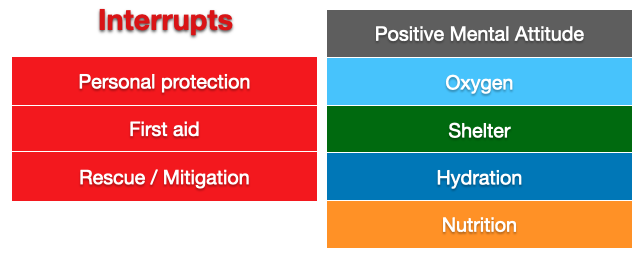A multi-part series on why homesteading is a strategic form of preparedness.
Martial practice was a large part of my life for over a decade. I made it to every class I could, which sometimes was quite regular and sometimes sporadic, as the needs of life required. Martial training was, for me, never about learning new words in Japanese, or cultural immersion, or anything other than gaining proficiency at violence (yes, that IS what martial study is about!) so that if anyone in my circle was threatened with harm, I might be able to help.
My instructor knew of my extra-dojo activities of emergency preparedness, firearm training, and the like. One of the reasons I stuck with this instructor (aside from the incredible knowledge and ability to apply it that he possessed) was that he understood melee-martial knowledge was but one facet of a personal protection strategy.
One day, after talking about emergency preparedness, he asked me “What should I do to best prepare my family for uncertain times?” I will never forget the perplexed look on his face when I answered simply “Learn to garden.”
Threat assessment
In the Keep and Bear LLC Emergency Preparedness 1 class, we teach a form of threat assessment that breaks events into component threats. For instance, a tornado is a threat event that brings the components high wind, water accumulation, lightning, egress disruption, power failure, and possibly more.
Many of the threat events people face lead to two specific threat components that are very risky: loss of income and supply chain disruption. Homesteading may also add some resiliency to civil unrest, depending on location.
In short, whether due to your own finances or factors at work locally, regionally, or even globally, you cannot get the resources you need to sustain you family.
Identifying and fulfilling necessities
This is rather straighforward, and comes directly from survival priorities:

Homesteading and personal resilience focuses on protection, shelter, hydration, and nutrition. Simply put, the best way to mitigate these threats is to have a means of supplying yourself with the basic needs.
It is very difficult to secure these needs in a resilient way in a subdivision. Homeowner associations (HOAs) are stocked with a plentiful supply of Kyles and Karens who make your business their business. If you’re lucky enough to live in a neighborhood without an HOA, or have a sensible one that respects property rights, congratulations.
Hobby gardening is generally tolerated in an HOA-controlled neighborhood. Expending that garden’s capacity to meaningfully feed your family is generally not tolerated. Complaints of being ‘unsightly’ abound, as well as ‘attracts too many bees’, and whatever other made up excuse is available as timid neighbors see “other than lawn” as an aberration.
As some basic survival needs are addressed in future installments, think of ways you can do this in your current situation, or how you might need to adapt your situation to accomplish them.
